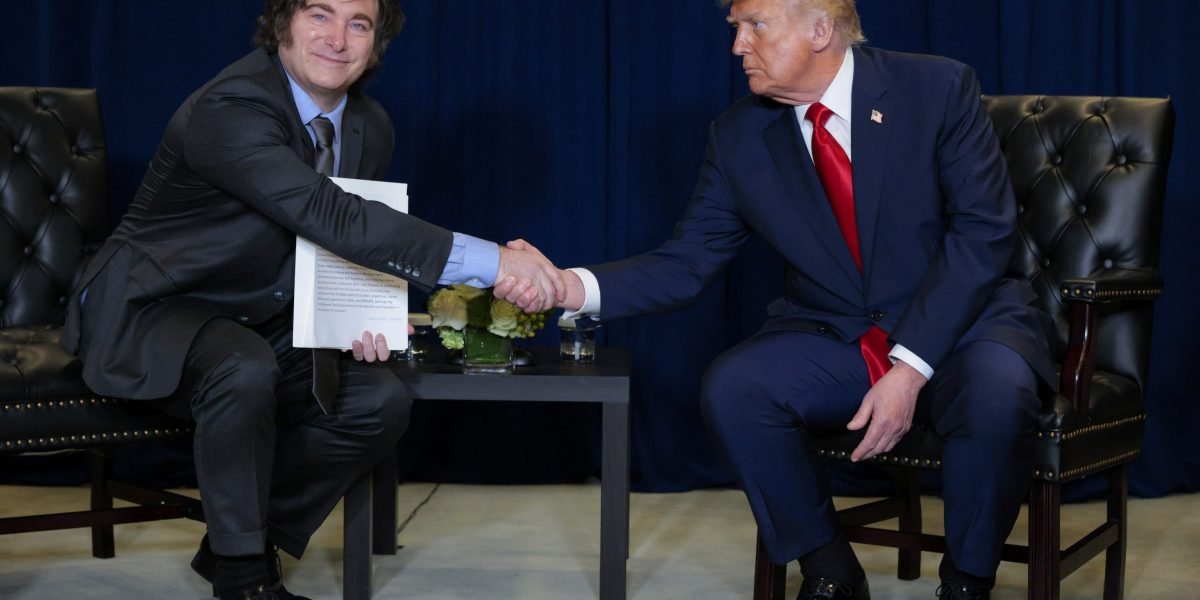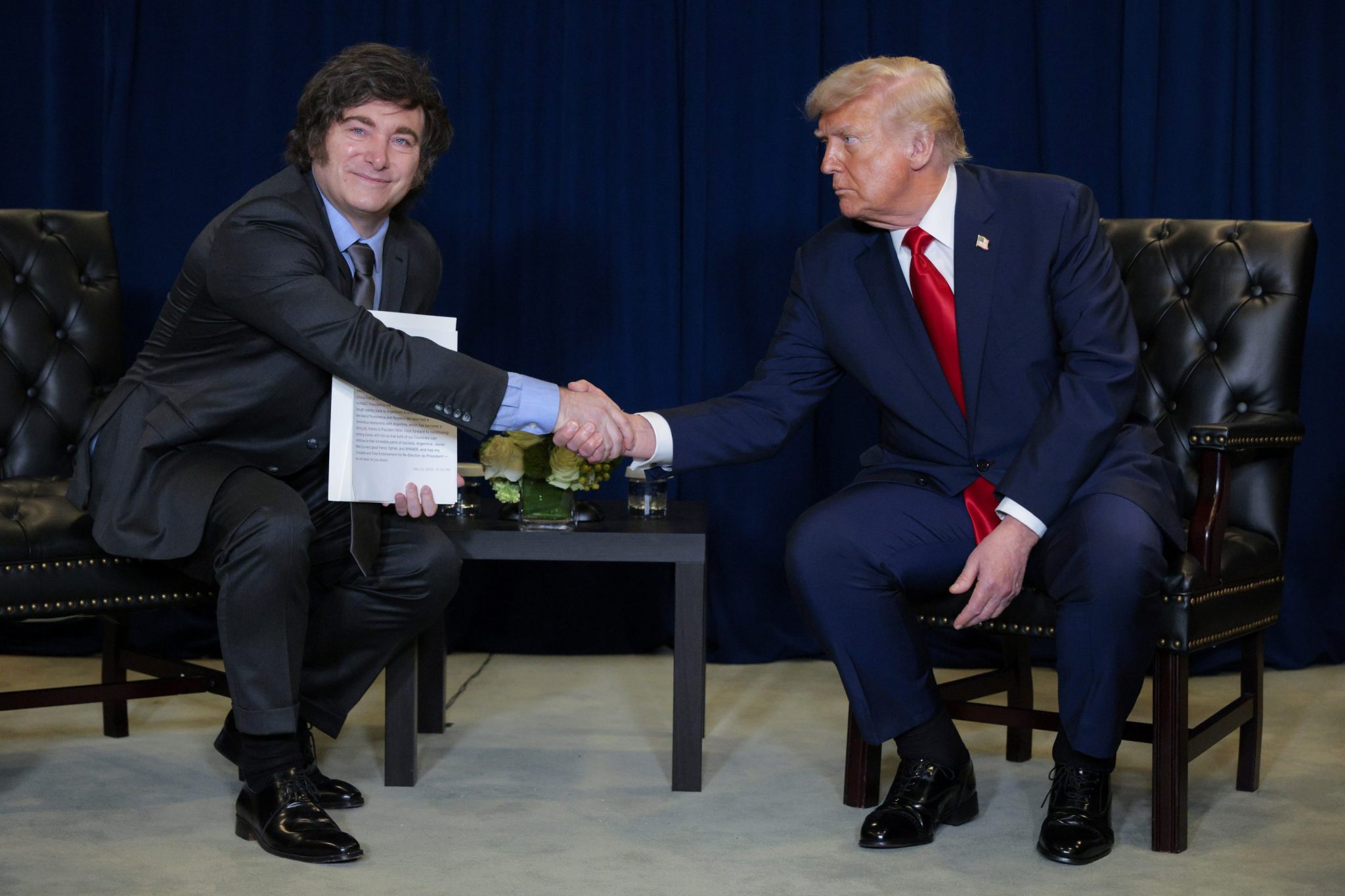
Argentina passes the begging bowl again

The world’s deadliest hit has surpassed the begging bowl once again. This time, Argentina is asking for $20 billion. This is the size of the barter line that US Treasury Secretary Scott Becent promised to pay in order to save Argentina and its faltering president, Javier Miley.
Where will this kind of money come from? Secretary Bessent will join the rarely used Exchange Rate Stabilization Fund at the US Treasury. He will do so without the approval of Congress. Why? Because President Trump bet on President Miley. Trump sees Miley as Uncle Sam’s man in Latin America – the man who will lead the charge against “Pink tideLeftist Latin American governments and confronting China’s trade and geopolitical conquests in the region.
But President Trump may be betting on a dead horse. After all, Argentina was never a good bet. Since independence, it has faced one economic crisis after another. In only the last two generations, there has been one hyperinflation (1989-1990); Six banking crises (1980, 1982, 1995, 2001, 2008, and 2019); and five balance of payments crises (1958, 1962, 1981-1982, 1989, and 2018-2019); four foreign debt defaults (1982, 1989, 2001, and 2020); three defaults on domestic public debt (1989, 2007-2009, and 2019); Numerous currency devaluations; And almost constant and punishing inflation.
Indeed, inflation remains a noose around Miley’s neck. When President Miley took office in December 2023, the money supply (M3) was growing at 130% per year and inflation was at 211% per year. Now, the money supply is still growing at 67% annually. This is well above what I call “Hanke’s golden growth rate” of 9.8% per year, a rate consistent with Argentina achieving its 5% inflation target. As a result, it is not surprising that inflation remains out of control at 33.6% annually.
Since joining the IMF in 1956, Argentina has called in the IMF’s firefighters several times. It is currently participating in the 23rd IMF programme. The result was a series of toxic IMF prescriptions. All have failed to treat the patient and have left Argentina mired in IMF debt to a staggering $41.8 billion. This is four times larger than the IMF’s second-largest debtor, Ukraine. Clearly, the IMF doesn’t put out fires, the Sugar Daddy does.
Why is Miley floundering?
So much for Argentina, what about President Miley? He is floundering and faces midterm elections on October 26th. Miley is floundering because he failed to fulfill the most important promise he made during his election campaign two years ago: to stop the Central Bank of the Argentine Republic (BCRA) and the untrustworthy peso, and replace the peso with the US dollar. He is now paying the price for his stubbornness and obtuseness.
Twenty billion dollars probably won’t save Miley. Among other things, my estimate is that as long as the Fed and the peso exist, about 75% of the money coming in through the front door will go out the back door as capital flight. Therefore, calling the currency agreement reached by Minister Besant a “swap” is a misnomer. It’s like exchanging a Mar-a-Lago resort for a cabin in the middle of the Pampas, or a piece of gold for a piece of lead. In reality, this would be nothing more than a loan to one of the world’s most famous defaulters. The only way to end Argentina’s currency nightmare and pull Miley’s chestnuts out of the fire is to replace the peso with the dollar.
Yet Miley’s political future – and the future of his reforms – remains uncertain. The peso remains Mele’s Achilles’ heel. In 2001, one peso bought one US dollar; Now it takes more than 1,421 pesos to get a dollar. Because of this lack of credibility, interest rates have skyrocketed. The average mortgage rate in September was 57.3%. The real (inflation-adjusted) rate of the peso was about 20%, compared to about 3% in the United States. The US Treasury swap will not be able to restore its credibility to the peso. It may even make things worse. If speculators imagine that the US Treasury’s goal is simply to help support the peso’s exchange rate until the election, after which there will be a significant devaluation, then speculators will do what they always do. They will rush in and drain BCRA’s dollar reserves. It’s a familiar pattern in Argentina.
In 1999, when I was an advisor to the government of Montenegro, that country was part of the remnants of Yugoslavia, and Montenegro used the high Yugoslav dinar as its currency. She designed and implemented a currency reform that made the Great German Mark legal tender. Within days, the dinar quickly disappeared from circulation, Montenegro became “dollarized,” and the brand replaced the dinar. She also advised Ecuador’s Finance Minister Carlos Julio Emanuel, and helped Ecuador when it replaced the US dollar with the unreliable sucre in 2001. In both cases, I heard objections similar to those raised about Argentina’s conversion to the dollar. Today, Argentine Economy Minister Luis Caputo and the IMF elders are singing the same song about “dollarization.” They assert that dollarization is ineffective and unwise. This is nonsense. As was the case in Montenegro and Ecuador, dollarization in Argentina is possible and wise.
John Maynard Keynes once said: “Universal wisdom teaches us that it is better to fail conventionally than to succeed unconventionally.” Argentina is once again taking the path it has taken so many times before, a path that has always led to failure. We will see if President Miley has the audacity to succeed unconventionally through dollarization.
The opinions expressed in Fortune.com reviews are solely those of their authors and do not necessarily reflect the opinions or beliefs luck.












Post Comment